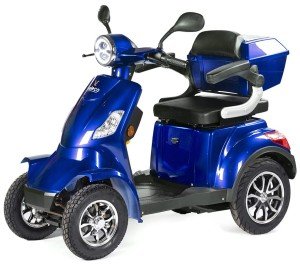Roxanne님의 문의내용입니다.
-
작성자Roxanne
-
조회수3회
-
등록일25-07-27 02:52
성함
Roxanne
연락처
이메일
유입경로
인스타그램 인스타그램
주소
평형
공사시기
공간유형
상업공간
공사예산
4,000~5,000
문의내용
Velcro: A Revolutionary Fastening Solution
Intro
Velcro, a name that has practically ended up being associated with hook-and-loop fasteners, has actually changed the method we believe about attaching materials. Typically a staple in different industries and households, Velcro provides a simple yet efficient solution to secure things without the need for buckles, buttons, or zippers. This article looks into the origins, systems, applications, and benefits of Velcro in addition to resolving some often asked concerns.
The Origins of Velcro
Velcro was invented in the late 1940s by Swiss engineer George de Mestral. After a hunting journey in the Alps, Mestral ended up being captivated by the burrs that stayed with his pet dog's fur. Upon closer evaluation, he understood they worked through a system of tiny hooks that ensnared anything with a loop, consisting of fabric and fur. Recognizing the capacity of this natural fastening system, Mestral started a journey to recreate it in an artificial form. By 1955, he had patented his development, branding it "Velcro," a combination of the French words "velours" (velour) and "crochet" (hook).
How Velcro Works
Velcro includes 2 different pieces: a hook side and a loop side. These 2 parts interlock when pressed together, developing a strong bond that can be easily launched with a simple pull. The performance of Velcro can be broken down into these primary components:
| Component | Description |
|---|---|
| Hook Side | This side features small hooks that catch and keep loops. |
| Loop Side | This side consists of soft loops developed to accept hooks when contacted. |
System of Fastening
- Interlocking: The hooks on one side catch the loops on the other, producing a physical interlock.
- Strength: The variety of hooks and loops makes sure a substantial holding strength, Velco (www.haywoodloven.top official blog) making it suitable for both light and heavy-duty applications.
- Alleviate of Use: Velcro can be disengaged and re-engaged various times without losing its efficiency, setting it apart from more standard fastening techniques.
Applications of Velcro
Velcro has actually found application throughout a myriad of sectors, including:
Fashion Industry
- Sportswear
- Shoes (particularly children's shoes)
- Accessories (belts, bags)
Medical Field
- Orthopedic gadgets
- Plasters
- Prosthetics
Automotive and Aerospace
- Seat covers
- Interior linings
- Safety gear
Home Items
- Curtains
- Carpets
- Organizers
Industrial Use
- Cabling
- Equipment securing
- Tools storage
Benefits of Velcro
The appeal of Velcro can be associated to a number of advantages it uses over traditional fastening techniques:
- Quick and Easy to Use: No tools are needed, making it easy to use.
- Flexible: Works on numerous surfaces and materials.
- Adjustable: Allows for simple adjustment in size (e.g., straps).
- Resilient: Holds up under repeated usage.
- Washable: Maintains its function even after washing.
Prospective Drawbacks
While Velcro is useful in numerous contexts, there are some constraints to be aware of:
- Noise: The noise of Velcro being pulled apart can be loud in peaceful settings.
- Wear and Tear: Over time, extreme usage may result in fraying or lowered efficiency.
- Limitations with Heavy Loads: While it can hold substantial weight, it may not be ideal for very heavy items.
FAQs about Velcro
1. Is Velcro water resistant?
Yes, Velcro can be made from waterproof products, making it ideal for outdoor and marine applications.
2. Can Velcro be recycled?
Definitely! Velcro is created for repeated use, and lots of products can be resealed and opened several times.
3. How do you tidy Velcro?
Cleaning up Velcro is easy. You can use a lint roller or a soft brush to get rid of particles. For persistent dirt, it might be rinsed carefully with water.
4. Is Velcro strong enough to change zippers?
In many applications, yes, Velcro can successfully change zippers, particularly in instances where quick attachment and loosening are required.
5. Are there various kinds of Velcro?
Yes, there are numerous types, consisting of varying widths, colors, adhesive strengths, and products designed for different applications (i.e., high-temperature, outdoor, and so on).

Velcro has actually shown to be a versatile and innovative attaching option that has infiltrated several sectors, enriching both everyday life and industrial applications. Its capability to offer a trustworthy and easy-to-use method of fastening makes it an enduring part of modern style. From casual garments to advanced medical applications, Velcro continues to uphold its credibility as a staple attachment method for many uses. Whether it's for the fashion enthusiast or a professional in the medical field, Velcro remains an unsung hero on the planet of securing technology.
By reinventing how we link and secure items, Velcro is a testament to the power of ingenious thinking and simplicity in design. As innovation progresses, we can only anticipate a lot more creative applications for this exceptional innovation in the future.



